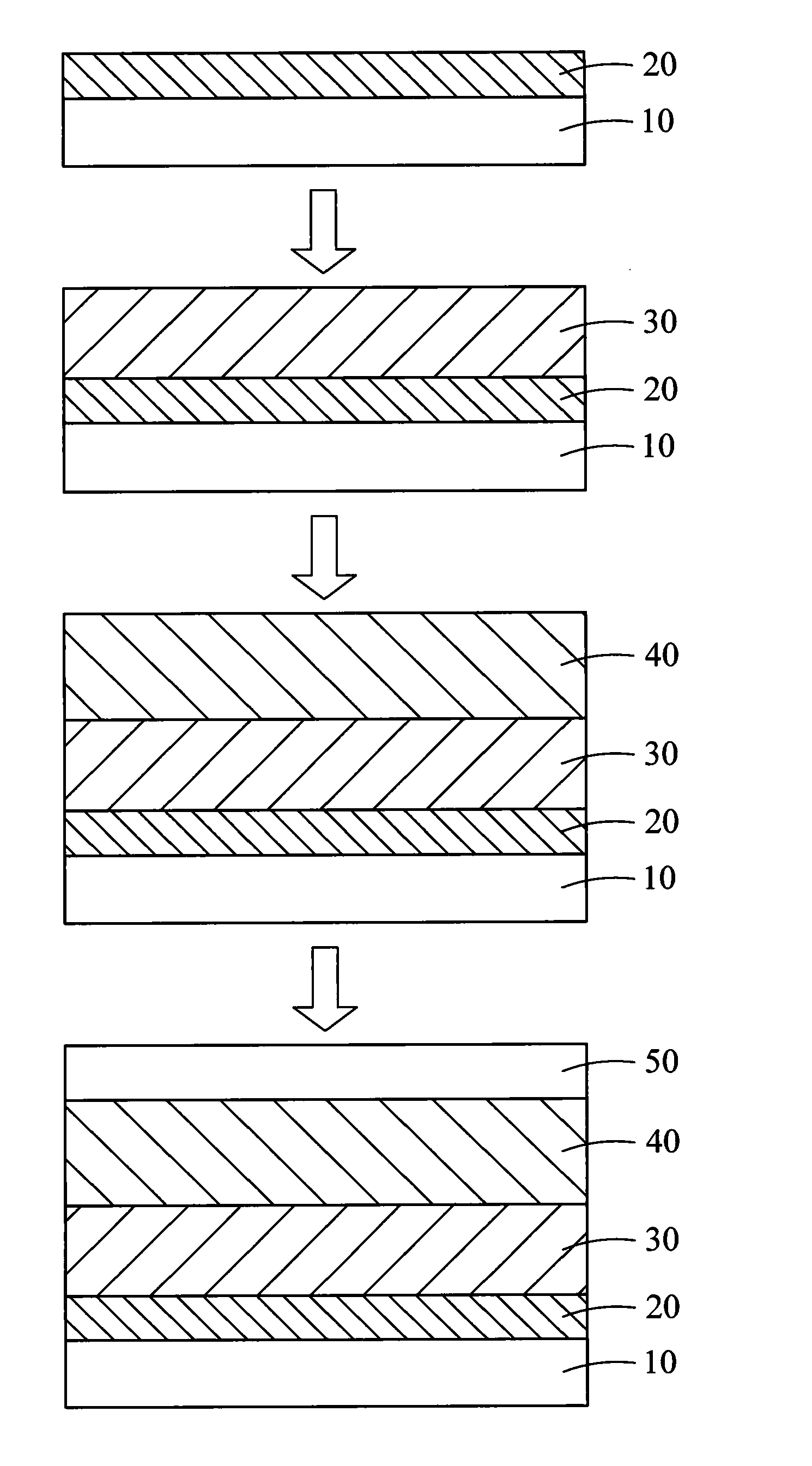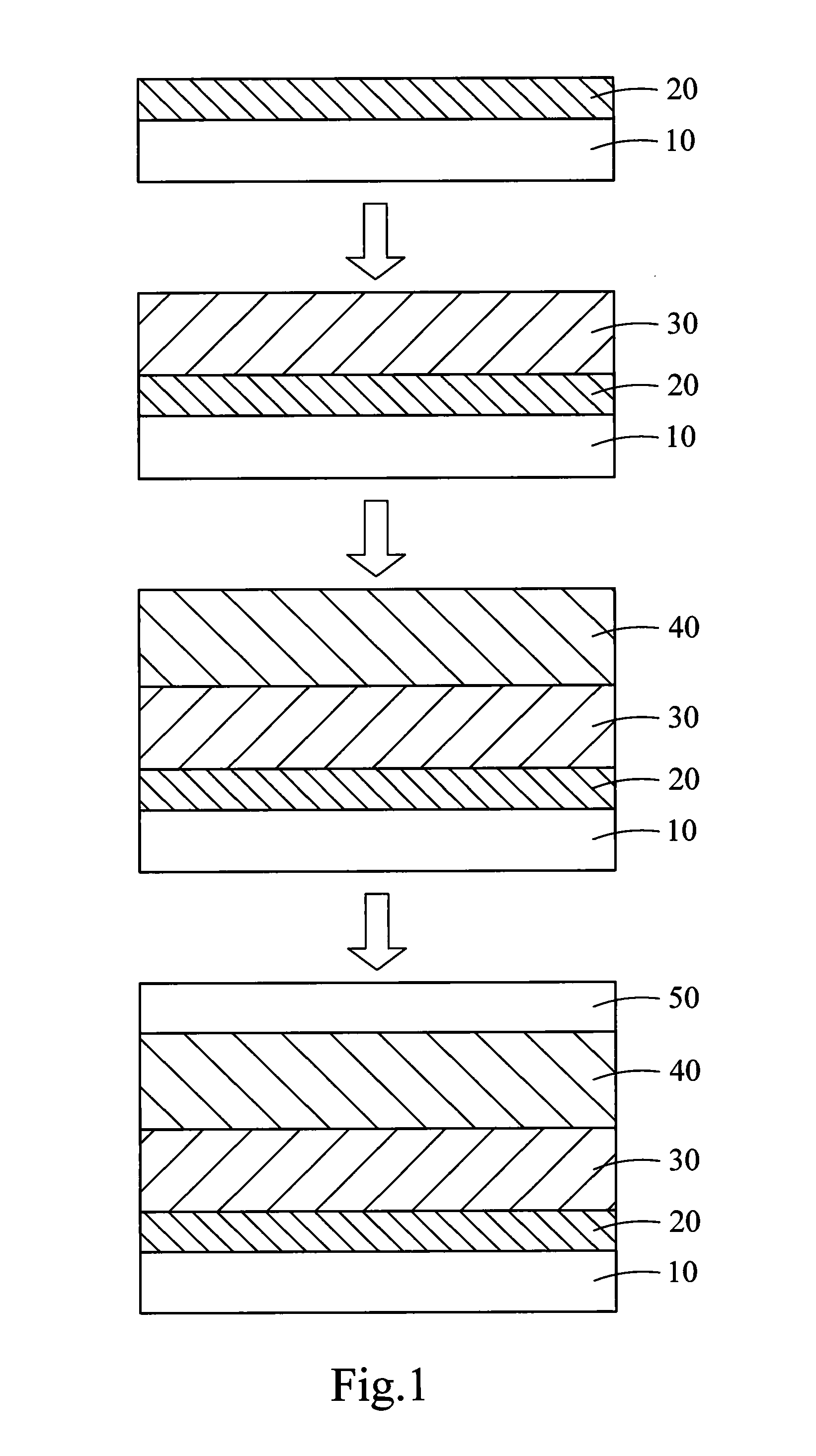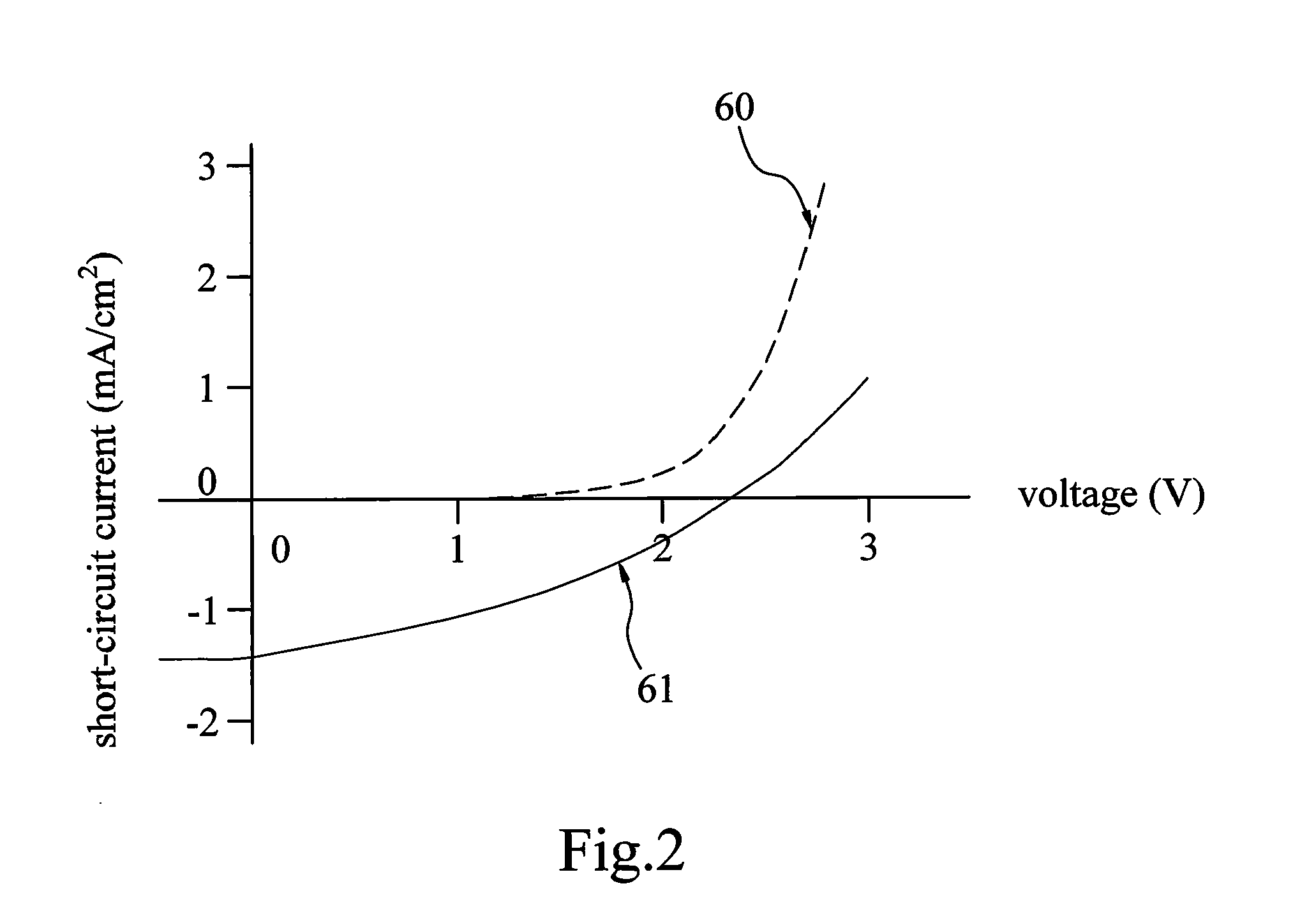Full-spectrum absorption solar cell
a solar cell, full-spectrum technology, applied in the field of solar cells, can solve the problems of poor photoelectric conversion efficiency, increased fabrication cost, and high cost of furnace process, and achieve the effects of improving the absorption of short-spectrum, high cost, and complicated fabrication process
- Summary
- Abstract
- Description
- Claims
- Application Information
AI Technical Summary
Benefits of technology
Problems solved by technology
Method used
Image
Examples
Embodiment Construction
[0013]The technical contents of the present invention are described in detail in cooperation with the drawings below.
[0014]Refer to FIG. 1 a diagram schematically showing the fabrication process of a full-spectrum absorption solar cell according to one embodiment of the present invention. The full-spectrum absorption solar cell of the present invention comprises a substrate 10, a first electrode layer 20 formed on the substrate 10, a P-type semiconductor layer 30, an N-type cobalt-doped layer 40, and a second electrode layer 50. The substrate 10 is made of a material selected from a group consisting of silicon chip, glass or plastic. In this embodiment, the first electrode layer 20 is made of a material selected from a group consisting of platinum, titanium and a combination thereof. The first electrode layer 20 has the metal opaque characteristic and reflects incident light. The P-type semiconductor layer 30 is arranged at one side of the first electrode layer 20 far from the subst...
PUM
 Login to View More
Login to View More Abstract
Description
Claims
Application Information
 Login to View More
Login to View More - R&D
- Intellectual Property
- Life Sciences
- Materials
- Tech Scout
- Unparalleled Data Quality
- Higher Quality Content
- 60% Fewer Hallucinations
Browse by: Latest US Patents, China's latest patents, Technical Efficacy Thesaurus, Application Domain, Technology Topic, Popular Technical Reports.
© 2025 PatSnap. All rights reserved.Legal|Privacy policy|Modern Slavery Act Transparency Statement|Sitemap|About US| Contact US: help@patsnap.com



